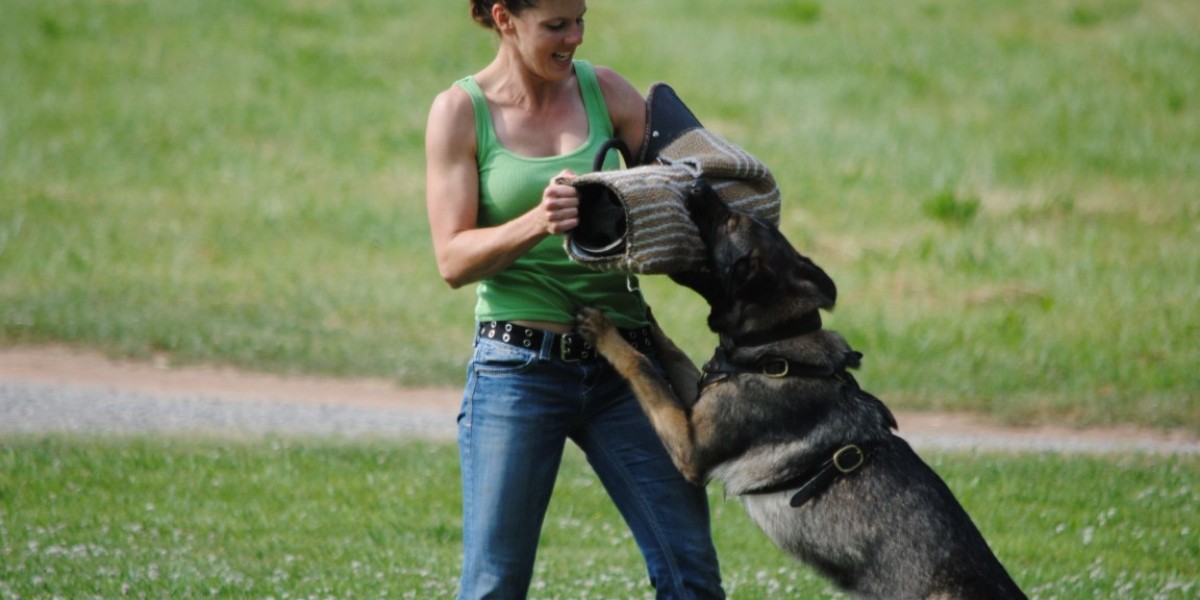In today’s world, security and peace of mind are priceless. While alarm systems and surveillance cameras are helpful, nothing matches the loyalty, intelligence, and deterrent power of a trained guard dog. These remarkable animals are not just pets — they’re expertly trained protectors who can defend families, homes, and businesses from threats. However, before investing in one, it’s essential to understand the protection dog cost, what influences it, and how to choose the right canine for your needs.
This article explores everything you should know about trained guard dogs, including their training, temperament, and the financial aspects of owning one.
What Are Trained Guard Dogs?
A trained guard dog is a canine that has undergone specialized instruction to protect its handler, family, or property from intruders or danger. Unlike standard obedience-trained pets, these dogs are skilled in recognizing threats, responding to commands instantly, and remaining calm under pressure.
There are generally three types of protection dogs:
- Guard Dogs – Trained primarily to alert and deter intruders. They often patrol properties and respond to suspicious activity.
- Personal Protection Dogs – These dogs are bonded to their owners and can defend them in real-world scenarios, such as muggings or home intrusions.
- Executive or Family Protection Dogs – The most advanced level of training. These dogs are well-socialized, safe with children, and can transition smoothly from family companion to fierce protector when needed.
Breeds commonly chosen for guard or protection work include the German Shepherd, Belgian Malinois, Doberman Pinscher, Rottweiler, and Giant Schnauzer. Each breed brings different strengths — the Malinois is agile and intense, while the Doberman combines speed and loyalty with a commanding presence.
The Training Process: What Makes a Guard Dog Effective?
A well-trained protection dog doesn’t act out of aggression but out of discipline. Professional trainers use proven techniques to shape obedience, control, and confidence.
- Basic Obedience:
Every protection dog starts with core obedience — sitting, staying, recalling, and heeling on command. This ensures total handler control before any protection training begins. - Socialization:
Contrary to popular belief, trained guard dogs are not vicious. They’re calm and social, taught to behave appropriately in public, around other animals, and within families. - Threat Identification:
Trainers teach dogs to recognize real threats versus normal behavior. A barking passerby, for example, won’t trigger a response, but a physical threat to the owner will. - Controlled Aggression:
The dog learns to use defensive skills only when commanded or when it perceives a real danger. Techniques include bite work on a sleeve or padded suit, with a focus on immediate release when ordered. - Home and Vehicle Protection:
Advanced dogs learn to guard vehicles, protect home boundaries, and respond to intruders even when the handler isn’t present.
This level of training requires hundreds of hours of professional work and consistency, which is why the protection dog cost reflects such extensive expertise and time.
Protection Dog Cost: What to Expect
The cost of a protection dog varies widely based on factors like training level, breed, and purpose. Here’s a breakdown of typical pricing ranges:
- Basic Guard Dogs: $5,000 – $10,000
These dogs have foundational obedience and property protection training. They are excellent deterrents but may lack advanced personal protection skills. - Personal Protection Dogs: $15,000 – $30,000
These canines are trained to defend their handler from real-world threats. They obey advanced commands and often live as family pets when not working. - Executive or Elite Family Protection Dogs: $35,000 – $100,000+
The highest level of training and temperament testing. These dogs are safe around children, adaptable to travel, and capable of responding to complex security scenarios.
Why Are Protection Dogs So Expensive?
At first glance, the protection dog cost might seem steep, but several factors contribute to the investment:
- Extensive Training:
Professional trainers spend months or even years perfecting the dog’s skills, using specialized facilities and equipment. - Selective Breeding:
The best guard dogs come from top bloodlines bred for temperament, intelligence, and physical health. - Socialization and Conditioning:
Dogs must be exposed to countless real-world environments — crowds, noises, and strangers — to ensure they react correctly under pressure. - Health and Maintenance:
Elite dogs receive regular vet checkups, vaccinations, and nutritional diets to maintain peak performance. - Lifetime Support:
Many professional providers offer ongoing training refreshers or handler courses, ensuring both dog and owner maintain proficiency.
When you consider these factors, the protection dog cost reflects not just a purchase price — it’s an investment in safety, companionship, and confidence.
Benefits of Owning a Trained Guard Dog
A professionally trained protection dog offers advantages that extend beyond security:
- Immediate Deterrence: The presence of a large, disciplined dog deters most criminals instantly.
- Loyal Companion: These dogs bond deeply with their families and provide affection alongside protection.
- Reliable in Emergencies: Unlike alarms that can fail or be ignored, a protection dog reacts instinctively and decisively.
- Adaptability: Family protection dogs can switch from playful to protective behavior in seconds, depending on the situation.
- Peace of Mind: Knowing your loved ones and property are guarded 24/7 offers unmatched reassurance.
Choosing the Right Protection Dog for You
Before purchasing, it’s essential to evaluate your specific needs and lifestyle:
- For Families: Choose a well-socialized family protection dog — one that’s safe with children and visitors yet capable of defending against threats.
- For Businesses or Large Properties: Consider a guard dog trained to patrol grounds and respond to trespassers.
- For Personal Security: Opt for a personal protection dog that’s responsive to your commands and trained for real-world defense.
Always purchase from reputable trainers or facilities that provide full documentation, temperament testing, and handler training. Avoid sellers offering “cheap protection dogs” — inadequate training can result in unpredictable or unsafe behavior.
Caring for a Trained Guard Dog
Ownership doesn’t end at purchase. A trained dog thrives with consistent care and engagement:
- Regular Exercise: Maintain physical fitness through daily walks, agility exercises, or playtime.
- Continued Training: Reinforce commands and practice scenarios to keep skills sharp.
- Proper Diet: Feed a high-quality diet to support energy, focus, and strength.
- Routine Vet Visits: Prevent health issues and maintain long-term performance.
A well-cared-for dog remains balanced, confident, and ready to protect at any moment.
Final Thoughts
Investing in a trained guard dog is a serious decision — one that blends the best of companionship and security. While the protection dog cost can range from several thousand to over a hundred thousand dollars, the return is invaluable: a loyal, intelligent, and highly capable protector devoted to keeping you and your loved ones safe.
Whether you’re looking for a watchful guardian for your property or a family-friendly protection companion, choosing the right dog and trainer will ensure you gain both safety and lifelong friendship in one extraordinary package.


